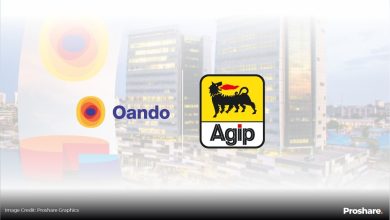HOW FIDELITY OUTSMARTS DELETERIOUS INTEREST EXPENSES IN Q3,2021

Fidelity Bank Plc Net Interest Income ,NII , suffered a serious setback in the third quarter of 2021 as ithe bank’s interest expenses rose exponentially by 85% within that quarter leading to the NII collapse by 45% to N14.7b from N27b in the third quarter of 2021 ; ultimately Fidelty bank’s profit after tax in Q3,2021 backtracked . .However ,on year on year basis its PAT maintained a strong positive outlook as in the first two quarters of the year
. Net interest income a major driver of core banking or lending activities , is sensitive to both credit risk and market risk. Market risk is essentially interest-rate risk for loans and deposits. Interest-rate risk will be driven by the maturity structure of the loan book, as well as the match (or mismatch) between the maturity of the loans against the maturity of the funding. This is known as the interest-rate gap. In a declining or low interest-rate environment, banks may suffer from negative NII irrespective of their asset–liability maturity profile, as it becomes more and more difficult to pass on interest rate cuts to depositors While Fidelity Bank could mange down its credit risk with its non performing loans ratio falling within the regulatory ratio and loan loss impairments minimized impressively , howver , the interest rate risk became its headache as cost of funds rose and yields on earning assets down during the third quarter as opposed to the first half of the year .
Q3,2021 was ,indeed, highly challenging season for Fidelity Bank Plc ; surprisingly ,however, only one dark spot , a major spoiler, pulled down the bottom line heavily southward
The major spoiler was its interest expenses which rose by 85% to N33.6b from N18.2b .However , the bank was lucky to have a reserve tank of fortune that saved it when its performance is holistically viewed for the first nine months of the year and even on year on year basis Its performance in the first half of the year was supersonic . .Ultimately , while its profit after was down by 21% to N7.2 b in Q3 2021 from N9.1b in Q3, 2020 ,on year on year basis its PAT grew by 29.9% to N26.5bn.
When its core banking or lending activities are looked into on year and year from September 2020 to September 2021 we could conclude that there was a downturn in returns . This is indicated by its less impressive net interest margin as it backtracked to 4.4% from 6.3% in 2020FY, as average funding cost inch up with the gradual recovery of business activities while yield on government securities remain low. In absolute terms, total interest income increased by N4.9bn while total interest expenses increased by N15.0bn, leading to N10.0bn decline in net interest income.
However , the negative impact of the above spoiler was minimized by the bank’s s supersonic performance from the beginning of the year particularly in its Q2 ,2021 results that silenced the said spoiler inQ3 in the core banking arena . In spite of the fact that its gross earnings grew merely by 6% to N112bn from N106bn in the previous quarter, its audited half year results show a record of 72.4% growth in Profit Before Tax from N12billion in the first half of 2020 to N20.6billion in the first half of 2021. Also , its profit after tax grew by 71% to N19.3bn..The outstanding financial results reflected the bank’s dedication and commitment to lowering operating cost and optimizing its balance sheet
The positive multiplier effects of these came up vividly to rescue the bank from the misfortune of its interest rate battle in the Q3 ,2021 as its superlative performance in noninterest income right from the beginning of the year .For instance , Gross Earnings increased by 12.5% YoY to N174.4bn on account of 63.7% growth in non interest revenue (NIR) to N36.9bn from N22.6bn in 9M 2020. The growth in NIR reflects the significant increase in customer transactions resulting in 76.0% growth in Trade Income, 53.2% increase in Digital Banking income and 48.7% growth in Account Maintenance Charges etc.
According to the bank its digital banking drive continued to gain traction as it had 56.1% of its customers enrolled on digital banking platforms from 52.8% in 2020FY, 125.9% YoY increase in total NIP transactions and 24.9% of fee-based income now coming from digital banking.
Managing Director/Chief Executive Officer Confirmed this as much . “We were able to sustain our performance trend since the start of 2021 with an impressive double-digit growth in profit-driven by 69.9% increase in net fee income which comp ensated for the decline in net interest income as average yield on liquid assets remain low. Profit before tax grew by 31.4% to N28.1bn from N21.3bn in 9M 2020 which translated to an increase in RoAE to 12.7% from 10.5% in 2020FY (11.0% in 9M 2020).
The bank also believes the pricing of the Senior Unsecured Notes, underscores the formidable confidence of a diversified range of global and local investors in Fidelity Bank’s growth aspirations and the well-experienced management team”.
Its regulatory ratios remain well above the minimum requirement with CAR at 18.8% from 18.2% in 2020FY and liquidity ratio came in at 34.5%, all w ell above the regulatory threshold of 30.0%.
Total Deposits increased by 16.1% YTD to N1,973.0bn from N1,699.0bn in 2020FY, driven by increased deposit mobilization across all deposits types (Demand | Savings | Tenor ). Local currency deposits increased by 15.8% YTD to N1,622.6bn while foreign currency deposits increased by 17.5% YTD to N350.4bn ($848.3m).
Its asset quality is equally superb . Net Loans and Advances increased by 21.6% YTD to N1,612.9bn from N1,326.1bn in 2020FY. However, intervention fund facilities and the impact of foreign exchange rate contributed circa 22.9% and 6.5% of the growth in our Loan Book respectively. Cost of risk came in at 0.2% and the NPL ratio (Stage 3 Loans) dropped to 2.8% from 3.8% in 2020FY. Other regulatory ratios remain well above the minimum requirement: CAR at 18.8% from 18.2% in 2020FY while liquidity ratio came in at 34.5%, w ell above the regulatory threshold of 30.0%.






